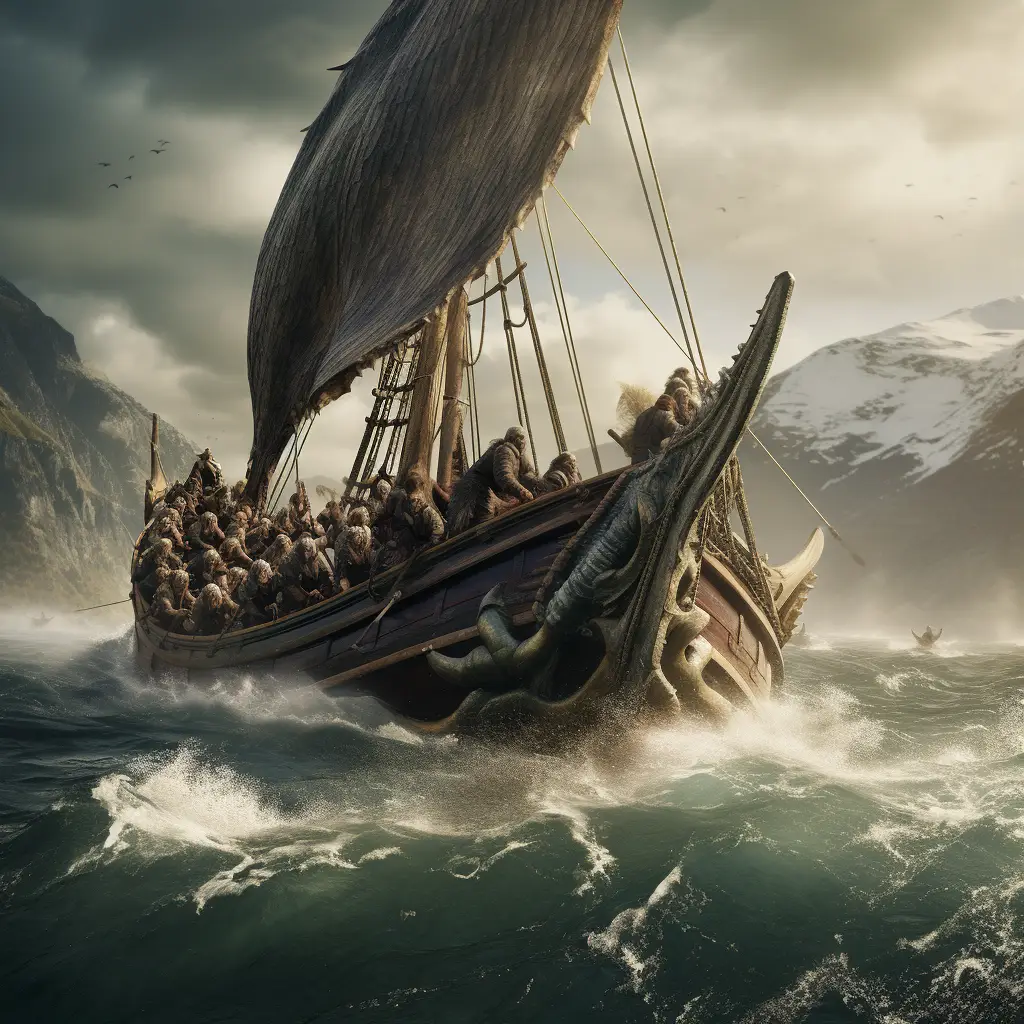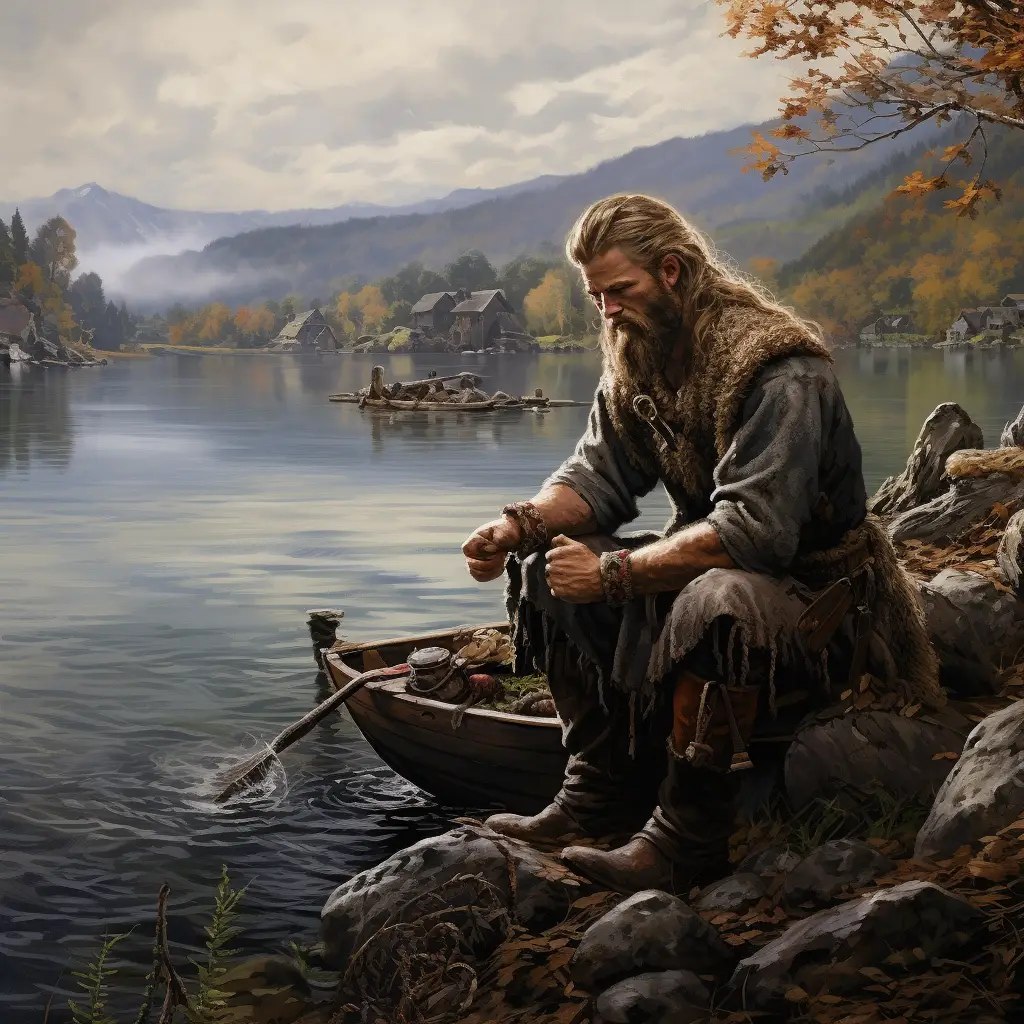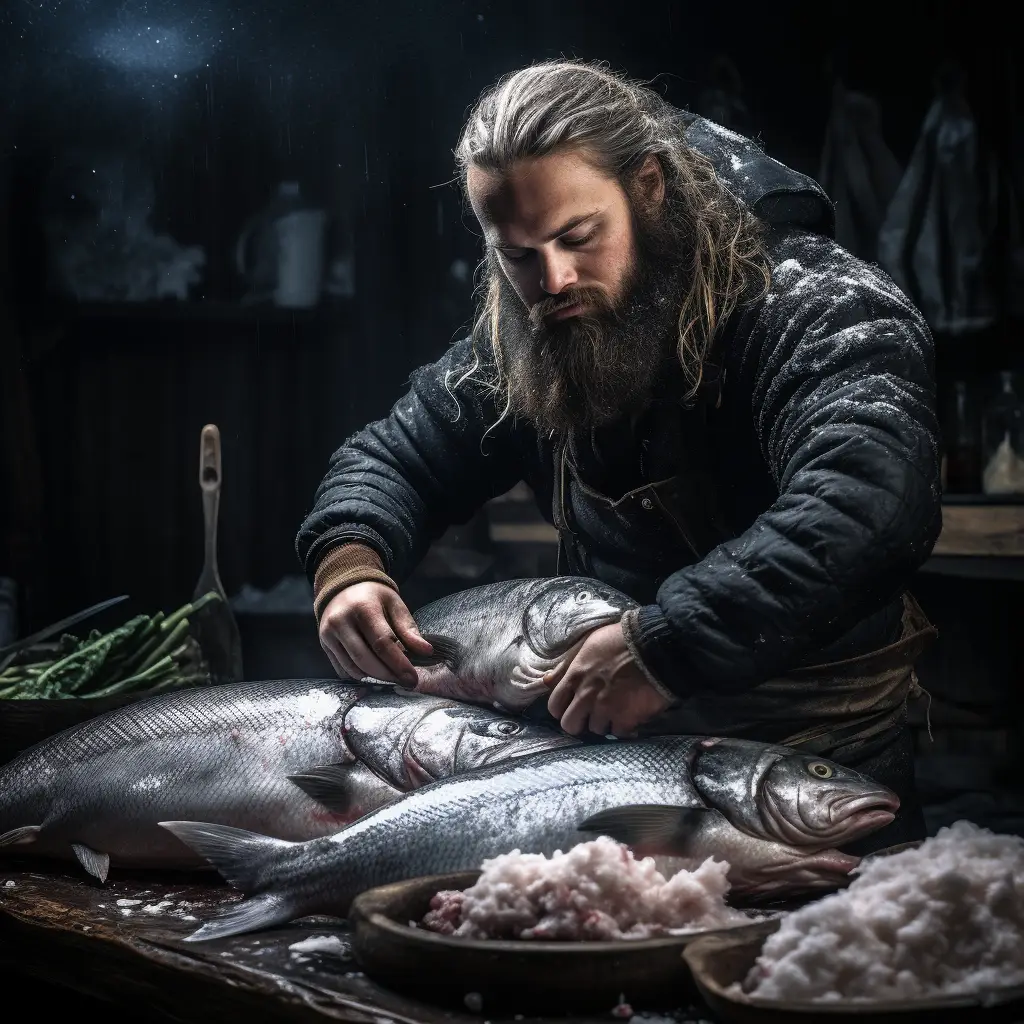Fishing: Given their proximity to the sea, fishing was an essential part of Viking life. Fish, especially cod, haddock, and herring, supplemented their diet and provided an additional source of sustenance.
Fishing was a vital activity for the Vikings, given their proximity to the sea and the abundance of water resources in the Scandinavian region.
Coastal Location: The Vikings, living in regions like Norway, Sweden, Denmark, and Iceland, had access to rich coastal waters and numerous fjords, rivers, and lakes. This proximity to water made fishing an integral part of their daily life.
Boats and Ships: Vikings were skilled shipbuilders and sailors. They used a variety of boats and ships for fishing, ranging from small row boats to larger longships. These vessels were designed to navigate both open seas and shallow coastal waters.
Types of Fishing: Vikings engaged in various fishing techniques, depending on the location and target species. Common methods included using nets, traps, lines with hooks, and spears. They adapted their techniques for both freshwater and saltwater fishing.
Species Caught: Vikings caught a wide range of fish, including cod, herring, mackerel, salmon, and other local species. Fishing provided an additional source of protein and nutrients, supplementing their predominantly agricultural diet.
Drying and Smoking: To preserve fish for long journeys or winter months, Vikings used drying and smoking techniques. Fish were hung in the open air or smoked over wood fires to remove moisture, extending their shelf life.
Trade and Commerce: Fish, especially dried and salted varieties, became important commodities for trade. Vikings traded fish with neighbouring regions, contributing to the economic prosperity of their communities.
Importance of Whaling: In addition to traditional fishing, some Viking communities engaged in whaling. They hunted whales for their blubber, meat, and bones, which were valuable resources for various purposes, including food, lamp oil, and crafting.
Cultural Significance: Fishing was not only an economic activity but also held cultural significance for the Vikings. It featured prominently in Norse mythology and sagas, and fishing scenes were depicted in their art, highlighting the importance of this activity in their daily lives.
Viking fishing provided essential sustenance, economic opportunities, and cultural connections. The combination of their seafaring skills and resourceful fishing techniques contributed to the success and adaptability of Viking communities in a challenging northern environment.
Fish and seafood were an important part in the Viking Age diet. Archaeological evidence also supports this. Large numbers of shells and fish bones have been found in waste heaps from Viking Age towns.


